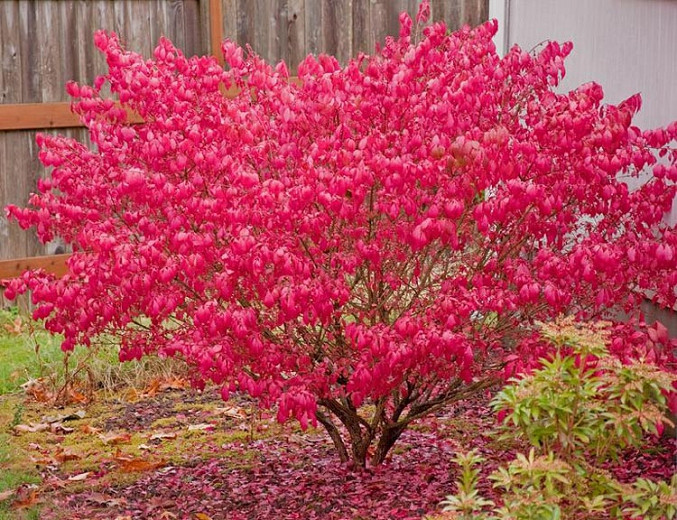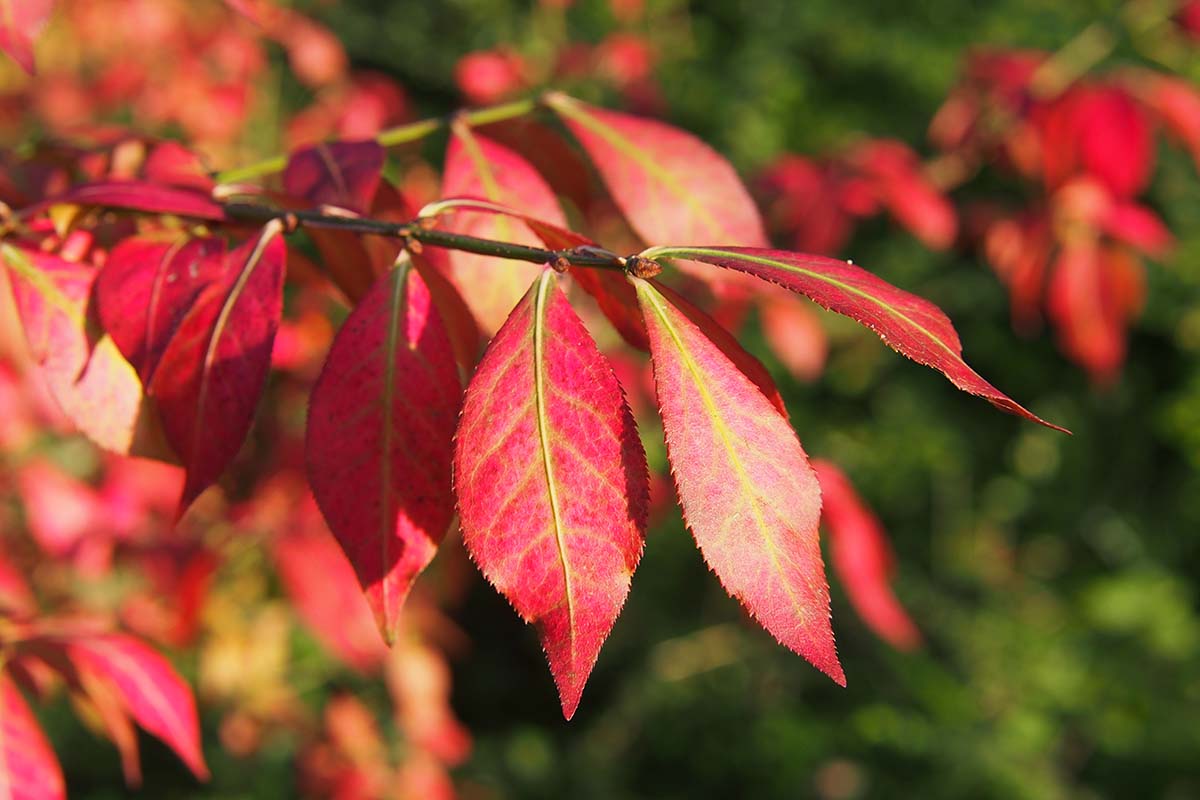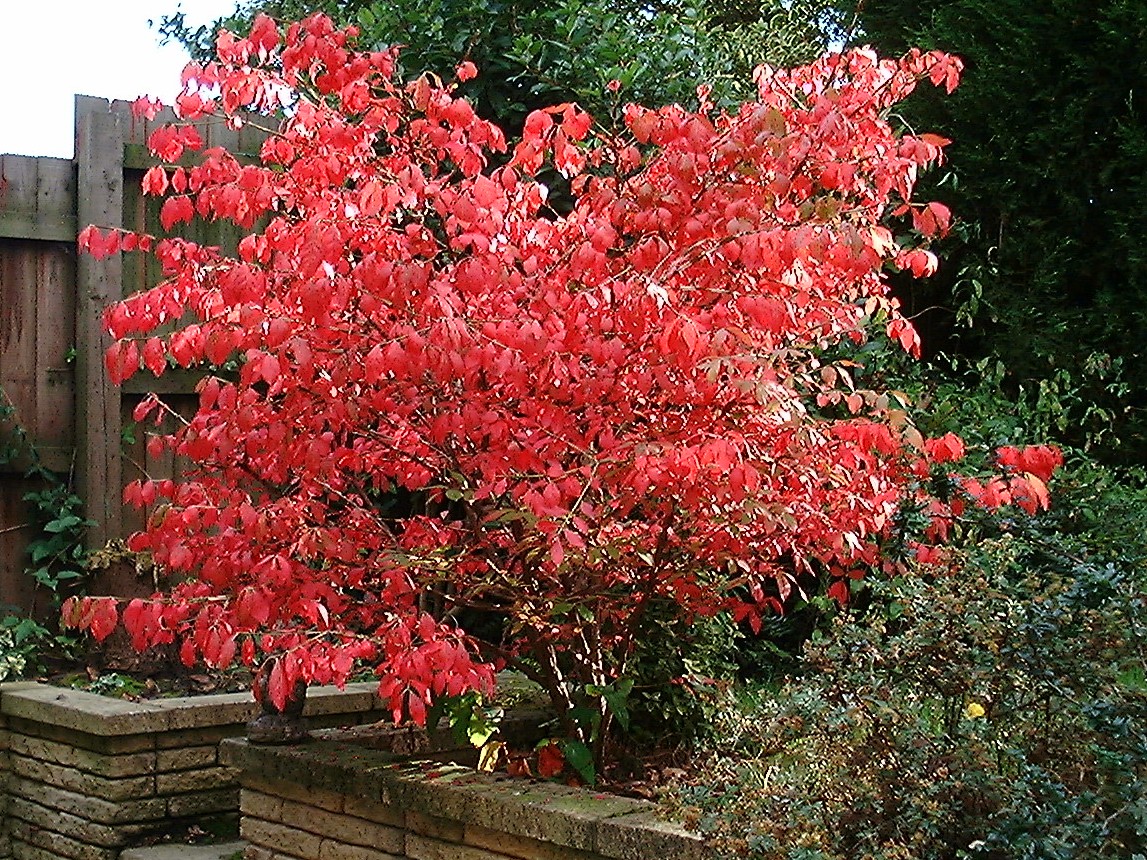Euonymus Alatus: The Burning Bush That's
Introduction
Euonymus alatus, commonly known as burning bush, is a beautiful deciduous shrub that is native to Asia. It is prized for its bright red fall foliage, which can make quite a statement in the landscape. However, burning bush is more than just a pretty face. It also has a number of other interesting features, including its winged stems and its orange-coated seeds.
In this blog post, we will take a closer look at Euonymus alatus. We will discuss its history, its physical characteristics, its uses, and its potential drawbacks. We will also provide some tips for growing and caring for this versatile shrub.
History
Euonymus alatus was first introduced to the United States in the mid-1800s. It quickly became popular as an ornamental plant, due to its colorful fall foliage and its relative ease of care. However, burning bush also has a reputation for being invasive. It can quickly spread and crowd out native plants, and it can also be harmful to wildlife.
Physical Characteristics
Euonymus alatus is a medium-sized shrub that can grow up to 15 feet tall. It has spreading branches and a rounded or oval shape. The leaves are elliptical and are typically green in the spring and summer. In the fall, they turn a brilliant red, orange, or yellow.
One of the most distinctive features of Euonymus alatus is its winged stems. These wings are actually corky ridges that run along the length of the stems. They help to protect the shrub from damage and also give it a unique appearance.
In the fall, Euonymus alatus produces small, greenish-white flowers. These flowers are followed by orange-coated seeds. The seeds are dispersed by birds, which helps the shrub to spread.
Uses
Euonymus alatus is primarily used as an ornamental plant. It is often planted in borders, hedges, and foundation plantings. It can also be used as a specimen plant.
In addition to its ornamental value, Euonymus alatus has a few other uses. The leaves and roots of the plant can be used to make medicine. Burning bush is also used in traditional Chinese medicine.
Potential Drawbacks
As mentioned earlier, Euonymus alatus has a reputation for being invasive. It can quickly spread and crowd out native plants. It can also be harmful to wildlife, as the seeds are poisonous to some animals.
If you are considering planting Euonymus alatus, it is important to be aware of its potential drawbacks. If you live in an area where the plant is known to be invasive, it is best to avoid planting it.
Growing and Caring for Euonymus Alatus
Euonymus alatus is a relatively easy plant to grow. It prefers full sun to partial shade and well-drained soil. The plant is drought tolerant and can withstand some cold weather.
Euonymus alatus does not require a lot of maintenance. It should be pruned in the spring to remove dead or diseased branches. The plant can also be pruned to shape it or to keep it from getting too large.
Conclusion
Euonymus alatus is a beautiful and versatile shrub that can add a lot of interest to the landscape. However, it is important to be aware of its potential drawbacks before planting it. If you live in an area where the plant is known to be invasive, it is best to avoid planting it.
If you do decide to plant Euonymus alatus, be sure to give it the right conditions and care. With proper care, this shrub will thrive and provide you with many years of enjoyment.
To learn more about Euonymus alatus, visit Garden Wiki.
FAQ of euonymus alatus
Q: What is Euonymus alatus?
A: Euonymus alatus, also known as burning bush, is a deciduous shrub or small tree that is native to eastern Asia. It is known for its colorful fall foliage, which can range from orange to red to purple. Burning bush is a hardy plant that is easy to care for, and it is tolerant of a wide range of soil conditions.
Q: How to plant Euonymus alatus?
A: Euonymus alatus is best planted in the spring or fall. Choose a sunny spot with well-drained soil. Dig a hole that is the same depth and twice the width of the root ball. Amend the soil with compost or other organic matter. Place the plant in the hole and backfill with soil. Water the plant thoroughly.
Q: How to care for Euonymus alatus?
A: Euonymus alatus is a low-maintenance plant. Water it regularly during the first year after planting, but once it is established, it is drought-tolerant. Fertilize the plant in the spring with a balanced fertilizer. Prune the plant in the spring to shape it and remove dead or diseased branches.
Q: How to propagate Euonymus alatus?
A: Euonymus alatus can be propagated from seed or cuttings. To propagate from seed, sow the seeds in the spring in a well-drained potting mix. Keep the soil moist and the seeds will germinate in about 2-4 weeks. To propagate from cuttings, take a 6-8 inch cutting in the spring or summer. Remove the leaves from the bottom half of the cutting and dip the end in rooting hormone. Plant the cutting in a pot filled with a well-drained potting mix. Keep the soil moist and the cutting should root in about 4-6 weeks.
Q: Is Euonymus alatus invasive?
A: Euonymus alatus is considered invasive in some areas, such as the northeastern United States. It is important to check with your local nursery or garden center to see if burning bush is prohibited in your area.
Image of euonymus alatus
- Euonymus alatus in full bloom.

- Close-up of the leaves of Euonymus alatus.

- The winged bark of Euonymus alatus.
- A cluster of Euonymus alatus berries.

- A Euonymus alatus tree in fall.

- A Euonymus alatus bonsai tree.

- A Euonymus alatus hedge.

- A Euonymus alatus shrub.

- A Euonymus alatus tree in a garden.

- A Euonymus alatus tree in a forest.

Post a Comment for "Euonymus Alatus: The Burning Bush That's"